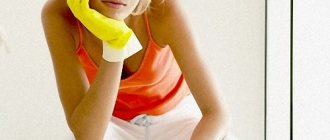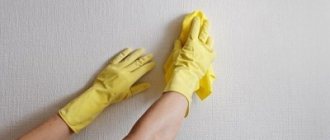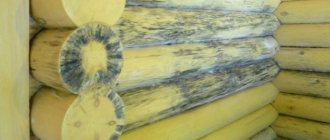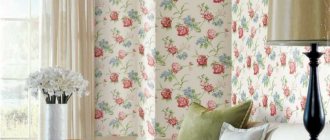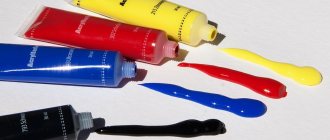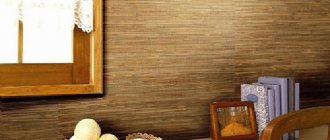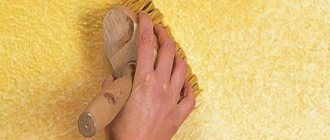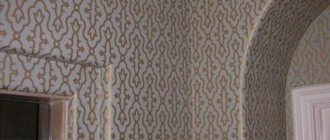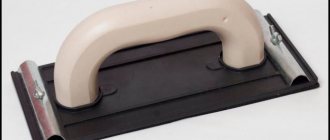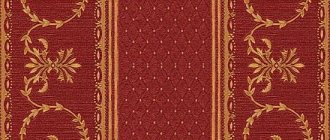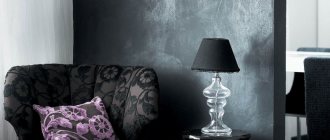It is very unpleasant to observe a situation when a huge stain appears on your favorite wallpaper, from nowhere, in the most visible place. However, you shouldn’t be too upset, the situation can be fixed and you won’t have to spend money on a new sticker. The most important aspect is the correct approach to the question of how to remove stains from wallpaper. To do this, you must carefully follow the advice of experts.
Preparatory work before cleaning
The first step is to carefully study what type of wallpaper is presented on the wall. Depending on what kind of base it has, the appropriate cleaning method must be applied. When purchasing, each roll comes with accompanying instructions in the form of a piece of paper with signs printed on it. It is from this paper that it will become clear what detergent can be used in the process of removing stains and whether this can be done at all.
Very often, after the gluing is done, all the remaining garbage, along with the instructions, is thrown into the trash bin and the fact that a contamination situation may occur is happily forgotten. If this happens, then you should find a place that is not visible to the naked eye and rub it with water or your chosen detergent. If the brightness of the pattern has not changed, you can begin to process the stain.
Washable, non-woven, vinyl coverings are best suited for removing stains. The situation is worse with paper representatives. If they are cleaned using liquid detergents, then there is a high probability that the paper will simply soften and the design will be damaged.
If the base is non-woven, then it is impregnated with a certain composition. Which is designed to repel moisture. Thus, when cleaning them with detergents, the liquid will not be absorbed inside, but only cleans the outer surface.
Types of wallpaper and their cleaning
The structure of vinyl wallpaper.
The moisture resistance of vinyl wall coverings depends on their type. Compact vinyl wallpaper is one of the most moisture-resistant. They are characterized by a smooth surface that can be wiped with a damp cloth and brushed. Detergents used to remove dirt from the surface of such trellises should be gentle (soap is best). It is not advisable to use abrasive powders or solutions with added acids to wash compact vinyl.
Foamed vinyl wallpaper looks very unusual and gives the walls an elegant look. They can imitate masonry, decorative plaster, natural leather, ceramic tiles. The disadvantage of this wall covering is that it is very sensitive to mechanical stress, so it cannot be washed with a brush. In order not to damage the top decorative layer, foam wallpaper in contaminated areas is simply wiped with a damp cloth, carefully running it along the relief pattern.
Vinyl trellises made using silk-screen printing are distinguished by their elasticity, smooth texture and attractive shine. They are widely used for pasting walls of various rooms due to their high wear resistance. They can be vacuumed, brushed, and washed with soap and water. Most often, rolls of silk-screened vinyl wallpaper are super washable and are marked with three wavy lines.
Products used for cleaning
Depending on the type of contamination and the delicacy of the wallpaper itself, the appropriate product is selected. If the decorative covering has a non-woven or vinyl base, then the use of detergents is allowed. In this case, you must follow the following algorithm:
- Take a dry cloth and wipe the surface.
- Wipe the stain with a sponge dipped in soapy water.
- Blot the area with a moisture-absorbing cloth to remove excess moisture.
Depending on what trace is left on the wallpaper, one or another detergent is used:
- melamine sponge – used to remove traces of pencil, marker, ink, dark hand stains, and other small stains;
- crumb from bread, you need to take a piece of bread, separate the crumb from it and apply it to the stain for a while. To remove stubborn dirt, the procedure is repeated several times;
- tooth powder with gasoline - suitable for all types of wallpaper. To do this, dilute a small amount of gasoline and tooth powder, apply it to the wall and wait until it dries completely;
- medical alcohol – eliminates traces of ballpoint pen, tea, coffee, felt-tip pen. It is enough to rub the dirt with a cloth soaked in alcohol;
- soda and starch - apply a paste of water and a small amount of soda or starch to the stain and wait until the product dries completely.
Choosing wallpaper for the kitchen: washable fabrics
In addition to vinyl, there are several other types of wallpaper for the kitchen that can be washed.
These include:
- Non-woven
- Acrylic;
- Glass wallpaper;
- Liquid wallpaper;
- Metal wallpaper.
Non-woven wallpaper has a lot of advantages. These are durability, moisture resistance, the fact that they are quite easy to wash, plus they are relatively inexpensive. Most of their composition is non-woven material.
There are non-woven wallpapers of the following types:
- Single layer;
- Two-layer (main layer covered with an additional one);
- Those that are ready for painting.
Acrylic wallpaper is quite delicate, so it is contraindicated to use detergents or too hard rags to wash it.
Fiberglass wallpaper is made from environmentally friendly materials. With their help, you can hide minor imperfections in the wall, and they are also quite resistant to mechanical damage. Such wallpapers will not allow steam to pass through, and microorganisms in them are not viable; they are also hygienic and waterproof. You can change the color of glass wallpaper, while maintaining its texture, about 10 times.
Liquid wallpaper may contain various decorative elements, such as sparkles, mineral chips, etc. To use such wallpaper in the kitchen, it must be treated with a protective varnish.
In case of severe contamination, you can get rid of the old coating and apply a new one.
Metallic wallpaper consists of plain paper, covered with aluminum foil, paint and a decorative pattern.
You can decorate such wallpaper with gold, silver or bronze plating. The most expensive version of such wallpaper is hand-painted.
Metal wallpaper can only be glued onto a perfectly flat surface, and for this you need to use dispersion glue.
Professionals advise not to use wallpaper for the entire area of the kitchen walls. It is better if the work area and the wall near the sink are lined with ceramic tiles. Combining materials not only makes the room original and unique, but also gives it functionality.
Oily stains
Grease stains on wallpaper are most often found in cases where there is a small child in the home who is constantly fidgeting and trying to touch everything around him.
The easiest ways to remove dirt are non-woven and vinyl wallpapers, which do not allow dirt to penetrate into their base. The most unsuccessful in this regard are paper representatives, which tend to get wet under the influence of liquid detergents. For the latter option, it is best to use dry cleaning mixtures, such as bread, tooth powder, starch, etc. If we consider the first two types, then the following products can additionally be used.
Soap solution
Laundry soap is used as the main component. How to remove stains from wallpaper using it is described below:
- The soap is grated.
- Diluted in a ratio of one to ten in water.
- Wipe the contaminated area with a foam sponge soaked in this composition.
- Take a napkin or toilet paper and wipe off the remaining liquid.
If there is an old, stubborn stain, it is recommended to use a toothbrush with soft bristles instead of a sponge.
Stationery eraser
You can try removing pencil stains with a paper eraser, using only the soft side. Do not wet the eraser or press too hard, otherwise the wallpaper will begin to roll off, and the area being treated will end up being much lighter than the main tone.
Chalk
In order to use regular chalk to remove grease stains you need:
- Pre-grind to dust.
- The prepared powder is thoroughly rubbed into the place where the greasy stain is located.
- After some time, the chalk, having absorbed the maximum amount of fat, will fall off the surface on its own.
To reduce the time, you can use an easier method by ironing a piece of cotton fabric with chalk powder applied to it over the surface of the stain.
How can you wash such wallpaper?
If the instructions recommend not only wiping the wallpaper with a damp cloth or brushing off the dust, then you should choose a cleaning method in accordance with the type of contamination. There are many traditional methods for treating wall coverings, but only some of them have a truly positive effect.
Baking soda
This is the easiest way to remove stains on the wall. It is always at hand and is found in 98 out of 100 kitchens. There is no need to rustle with the powder itself. It's better to follow the step-by-step instructions:
- Dissolve 20 grams of the substance in a liter of water at a temperature of about 40 degrees.
- Find a clean sponge or soft cloth.
- Wring out the wet cloth from the solution and wipe the wallpaper. In areas of particular contamination, you can wet it more thoroughly if this does not destroy the structure of the material.
This makes it better to clean the kitchen regularly. After several procedures, dark plaque and greasy stains can be removed.
Soapy water
A simple way to remove dirt on the walls. A soap solution will help when treating lightly contaminated areas. It is better to rub a bar of soap.
- mix part of the substance with 10 portions of water;
- wipe the dusty wall with a moistened sponge;
- Rinse the sponge in fresh water and remove any remaining soap from the wallpaper.
Streaks left on the wall can cause more dust to settle. This way you can remove fresh marks from a pencil or felt-tip pen. If more than a day has passed since the contamination, you should use other means that can remove the stubborn stain.
talc
Greasey oil stains from a frying pan can be removed with this substance.
- You need to put old newspapers and oilcloth on the floor. Loose talc will remain on all adjacent surfaces.
- Apply a certain amount of powder to a sponge and lightly rub the stains.
- It is better to leave the grated surface for 20 minutes.
- Take a clean cloth and remove the soaked talc.
In case of severe contamination, you need to place a cloth on the stain filled with talcum powder and heat it with an iron.
Citric acid
Oil deposits and other heavy stains can be easily removed using regular citric acid if you follow the instructions.
- pour 3 tablespoons of the substance into a glass of warm water and mix thoroughly;
- Rub the area with greasy stains with a wet sponge and leave for 5-7 minutes;
- rub the wall with citric acid.
The final cleaning step is rinsing. The wallpaper should be wiped with a clean damp sponge. This cleans not only the kitchen area, but also the marker drawings.
Alcohol
Another way to get rid of greasy stains and bright patterns is to use alcohol. Suitable for topical use in a ventilated area. During the procedure, it is recommended to remove children from the room.
Cleaning with alcohol
- moisten cotton wool, cotton pad;
- rub the stained area.
The alcohol evaporates immediately. It is important to act quickly without wasting time. This way you can remove traces of glue from stickers and marks from mosquito sprays.
Dish gel
Universal wallpaper cleaner. Suitable for different types of dirt and materials. More detailed information about the suitability of the gel for washing wallpaper can be found in the instructions or by touching the composition of the material. To fully cope with contamination, you need to carry out work in several stages:
- Dissolve 3 drops in a liter of water at room temperature.
- Moisten the sponge and squeeze out excess.
- Dampen the stained area with a sponge.
- After 10 minutes, lightly wipe the wallpaper with a sponge dipped in the solution.
- Remove any remaining stains or marks with a clean cloth.
A more modern detergent is more reliable than a regular soap solution. This method is suitable for difficult stains.
Hydrogen peroxide
If, as a result of an accident, a random combination of circumstances, or other incidents, droplets of blood appear on the wall, you need to use ordinary hydrogen peroxide. The disposal process itself is very easy, but it is important not to stain clean surfaces with diluted blood. Simple rules should be followed.
- instead of a sponge, you need to use a cotton swab;
- place the cotton wool in peroxide, wait until it is soaked;
- squeeze so that nothing drips;
- Apply the swab to the blood stain and collect the blood using rolling movements.
After removing marks, additional surface treatment is required. It's better to use a damp cloth. There are green stains on the wallpaper. They cannot be avoided when a small child appears in the house. There is no problem if you have hydrochloric acid on hand.
- A 3-5 percent solution is suitable.
- Apply the dampened sponge to the green areas of the wallpaper and try to absorb the liquid without smearing it on the clean surface.
After the procedure, it is necessary to remove any remaining acid with a damp cloth.
Vinegar
This method is suitable for cleaning fresh wallpaper. Vinegar is great for removing simple glue stains. It is better to use a spray bottle.
- undiluted vinegar 9% should be poured in a small amount into a spray bottle;
- generously treat the area with glue that has spread on the wall;
- leave the wall to soak for 15 minutes;
- Remove any remaining dissolved glue with a wet cloth.
When the glue has just flowed out from under the material, it can be easily removed from the surface with a soft, damp cloth.
Video: how to wash washable wallpaper at home?
Removing stains from paper wallpaper
The most difficult to remove stains are paper wallpapers. It is from them that in most cases it is not possible to remove the stain. However, do not despair and should use several methods.
Soft white bread
If a fresh greasy stain is found on the wall, then you should take a crumb of white bread, the size of the piece should correspond to the existing stain and apply it to the wallpaper. After some time, the stain should be absorbed into the bread. If the procedure does not help the first time, then it is worth repeating.
Iron and napkin
- Take a soft paper napkin and an iron.
- The iron warms up to a low temperature.
- The napkin is applied to the stain and ironed until it becomes greasy.
As in the previous case, the procedure is repeated until the contamination is completely removed.
A few nuances of washing wallpaper
Finally, let's look at how to wash wallpaper correctly. This operation should be carried out as follows:
- First of all, the wallpaper must be cleaned of dust. To do this, you can use a dry cloth. If the dust is not removed, dirty streaks will appear on the surface;
- then clean the surface using one of the methods described above. At the same time, do not press the sponge too hard against the wallpaper, so as not to damage the coating;
- After removing the dirt, eliminate drafts in the room so that the wallpaper does not begin to peel off. Also, do not try to force dry the surface with a hairdryer or other means. .
By following these simple rules, you can get rid of dirt on the finishing surface without damaging it.
Useful tips
Everyone knows that keeping your home clean is a rather difficult task, which can be solved using various detergents. However, you definitely need to know where and what to use. One liquid easily removes dirt, while another can cause significant damage to the coating.
Every self-respecting housewife has a whole treasure trove of tips that help her in her daily fight against stains and dirt of various kinds:
- If the base of the kitchen wall covering is a thin paper base on which embossing is applied, then the use of wet cleaning methods should be limited. If you still cannot refuse detergents, then you should not rub the surface, but use the method of soaking and removing excess moisture with a dry paper napkin;
- if the wallpaper has a pattern that is applied with different paints, then the use of detergents can completely blur it;
- If a high-temperature method using an iron is used during the cleaning process, then you need to carefully monitor the temperature and avoid overheating. Otherwise, the napkin may stick strongly to the surface and will be quite difficult to remove. If this does happen, then it should be wetted and removed. After waiting a few minutes until completely softened;
- Avoid exposure to high temperatures. Otherwise, the internal structure of the adhesive composition may be damaged and the wallpaper will come off the wall.
When using any of the cleaning methods, you should monitor what is happening very carefully. It is quite difficult to clean the surface of wallpaper, but with some effort it is possible.
Rules for cleaning wallpaper
It is easy to wash the wallpaper using special or improvised means, if you know what kind of coating is on the walls.
You can find out the brand on the roll or ask a store consultant. Before purchasing building materials, their use is carefully considered. Cleaning conditions depend on the type and brand of finish. Types of wallpaper:
- waterproof fabrics can be carefully wiped with a cloth dampened with water without using detergents;
- washable coatings can be cleaned with soapy water;
- super washable, resistant to water, can be washed using any detergent;
- resistant and super resistant to friction cleaning.
The packaging indicates the maximum degree of contact of the fabric with water. Before washing, you should consider the type of wallpaper and the material from which it is made.
Paper
The coatings attract with their appearance and low price. Washing them with water is contraindicated. When they come into contact with liquid, they peel off from the walls.
You can clean paper wallpaper from dirt with a soft brush or a clean broom. Use baby powder or talcum powder.
Builders advise coating paper trim with varnish so that the canvas becomes moisture resistant.
Vinyl
The coatings have a hydrophobic surface. Accumulated dust and dirt can be removed with a vacuum cleaner or a brush with soft bristles. Then cleaning is carried out using a wet method. Technologies have made it possible to create a coating with high resistance to moisture and mechanical damage. They last a long time. You can wash vinyl wallpaper using household chemicals and home folk methods.
Vinyl coverings are used for rooms with a high risk of contamination: kitchen, hallway.
Odors are not absorbed into this fabric, and stains are easy to get rid of.
Detergents
You can wash washable wallpaper from dirt in the kitchen using foaming agents and soap solutions. The coating is wiped with damp sponges and detergents. The finishing contains paper; cleaning should not use a lot of water.
Try not to damage the canvas by moving too hard.
Non-woven
Washing depends on the marking; it is indicated on the packaging or roll insert. Most of these coatings can be cleaned with professional products, ordinary household powders or dishwashing gel. It is allowed to treat non-woven wallpaper with a steam cleaner or vacuum cleaner.
Liquid
Not resistant to water. You can wash them off the wall with a wet rag or sponge.
If liquid wallpaper is varnished, it becomes resistant to moisture.
Other
Paintable fiberglass can withstand cleaning of contaminants with water. They are usually painted with waterproof paint so that the surface can be washed. The abrasion-resistant and super-resistant to friction cleaning fabrics can be cleaned with brushes or a vacuum cleaner.
Photo wallpapers are produced on a paper base that is water-resistant. Washing should be careful so as not to spoil the design. The smooth surface allows you to remove dust using dry methods.
Textile coverings are best cleaned with a vacuum cleaner.
How to remove yellow stains on walls and ceilings
Yellow spots on wallpaper are most often observed on the ceiling, since the reason for their appearance is a malfunction in the water supply systems of the neighbors above or their simple carelessness, due to which the water was not turned off in time. Often such stains appear after gluing wallpaper of a lighter tone than the previous ones. For example, if there was a brown coating on the walls and ceiling, then the yellow streaks and stains on it would not be noticeable, but if after that the walls were covered with beige or light yellow wallpaper, the stains would appear on the paper.
Such stains also appear in the kitchen due to small leaks in the pipes of your own apartment or due to the collection of condensate. Regardless of the reason for their appearance, yellow streaks and stains create the impression of sloppiness in the room, even if it has recently been freshly renovated. Unfortunately, it is not possible to remove stains that have already appeared on the wallpaper after gluing; they are decorated or sealed with various materials. But there is a way to prepare a yellowed wall for wallpapering so that these stains do not show through again. To do this you will need the following tools:
- A metal spatula is 5-8 cm wide.
- A piece of foam rubber or a kitchen sponge.
- Basin made of metal or plastic.
- Brush 3 cm wide.
- Roller.
- Suitable container for paint.
- White oil paint glossy.
- Deep penetrating soil.
Having collected all the necessary tools, proceed as follows:
- Using a spatula, carefully remove the paint with yellowed areas and streaks. Pour white into the container, put on rubber gloves and soak a sponge in the white. Wring out the sponge and then wipe the stain. Apply the bleach material to the stain, hold it for a few seconds, then apply it to the next stain. This is how they move across the entire affected area, periodically dipping the material into a bowl of white. Gradually, the sponge will absorb the yellowness and become dirty yellow, after which it must be replaced with a new one.
- After treating the surface with bleach, it is allowed to dry. If the dried surface has brightened, then the process is over; if not, then the whole procedure is repeated again. If yellow streaks on the walls and ceiling are accompanied by rust stains, they must be treated with a 10% solution of copper sulfate.
- Oil stains from the ceiling and walls should also be removed before wallpapering the surface. To do this, the contaminated area is cleaned of dust and dirt, and then treated with soil with a deep penetration rate. The primer is allowed to dry and then covered with paint. After the paint has dried, you need to make sure that the stain does not bleed through the paint layer. If the stain shows through, it is necessary to apply several more layers of paint.
- If yellow color appears on the surface after major painting, then you just need to apply several layers of paint to this area. This problem area will differ in tone and brightness of color, therefore, it is necessary to take care of removing the stain from the walls even before starting the repair.
How to wash paper wallpaper from dirt
Paper cannot be washed, it will quickly become unusable, so paper wallpaper can only be wiped with a damp cloth, without applying too much pressure on the material. If wet cleaning does not remove dirt from them, it is better to replace the coating with a new one. There is no other way, because once upon a time when finishing you chose the cheapest option.
The so-called textile wallpaper is usually classified as this type. It is better to clean them with a regular vacuum cleaner.
The only exception is paper wallpaper with a special moisture-resistant coating. But even with moisture resistance, you should be wary of wet tears. Be careful. Washing paper wallpaper should be done carefully.
How to remove marker marks on wallpaper
Children sometimes present not entirely pleasant surprises to their parents and leave artwork with paints or felt-tip pens on fresh wallpaper. And if the paints are easily washed off with ordinary water and a sponge, then if stains from a felt-tip pen appear on the wallpaper, you will have to work a little to remove them. What does that require:
- Hydrogen peroxide 3%.
- Stain remover for clothes.
- Alcohol or ammonia.
- Cotton buds.
- Stain remover for ink or felt-tip pens.
Before removing stains, you need to find a package with the very markers that left their mark on the walls and read their composition. Alcohol markers are much more difficult to remove than water markers. There are 4 output options:
- Dip a swab or cotton swab into alcohol or ammonia and gently wipe the stain with it. In this case, you need to carefully ensure that traces of the felt-tip pen remain on the cotton wool and are not smeared across the clean space. Instead of a dyed swab, use a fresh one.
- For water-based markers, an oxygen fabric stain remover is suitable. It is applied to the stains, left for 10-20 minutes and then washed off with warm water.
- Mix 1 tablespoon of medical alcohol and a spoon of citric acid. Dip a tampon into this mixture and wash the stain until it completely disappears.
- Use a special product that removes ink or markers. It is sold in hardware stores and looks like a regular pencil. Each stain remover of this type has detailed instructions that will tell you how to use it.
Tip: before removing stains from visible areas of wallpaper, you should test the selected product on an inconspicuous area. Some types of coatings react to reagents by changing color or structure. Therefore, in order not to spoil the wallpaper, you should check its compatibility with the substances described above.

